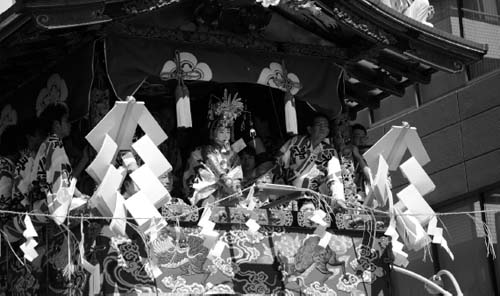ShintoCustoms and Rituals |
Is exorcism important in Shinto practice? |
Demons and assorted evil influences miss no opportunity to make nuisances of themselves, especially at times when human beings and natural processes are most vulnerable. Beginnings, such as planting time or the birth of an infant, can be particularly difficult in this respect. Shinto tradition includes various understandings of how evil forces work and several methods for contending with them. Most undesirable forces are associated with impurity and pollution. Some evil spirits will depart in a ritual that designates as a scapegoat any animal or object capable of taking on the negative forces. Emperors of old rubbed a human effigy over their bodies, leaving all personal impurity on the image, which officials of the “Bureau of Yin and Yang” then ritually consigned to a river. Other rituals use a weapon such as a sword to attack the evil power as though it were a physical presence. Some rituals assume the evil forces have taken on demonic bodies and must be pursued and expelled from a locality. In one rite, people throw soybeans in unlucky directions and command the demons to depart, an important part of the spring Setsubun (“season change”) Matsuri.
Some large festivals are entirely dedicated to a type of communal exorcism. An originally Buddhist rite called Goryo-e (“meeting with august spirits”) has been associated with Kyoto’s famous Gion Matsuri, for example. That festival arose out of a need to banish the spirits of disease, and eventually grew into a full-scale Shinto celebration. Another important interpretation of spirit possession has been traditionally associated with the belief that the fox is capable of changing shapes. Extraordinary spiritual states were therefore sometimes explained as a type of “fox-possession.” Some popular traditions identify various psychosomatic illnesses as forms of possession. “Soul pacification” (Tama-shizume) is a kind of reverse exorcism in which ritualists seek to make a spirit content to remain in the body of a person suffering from illness.

The festival of Gion Matsuri is over a thousand years old and is the most famous festival held in Kyoto. (Chiharu / Shutter-stock.com.)
